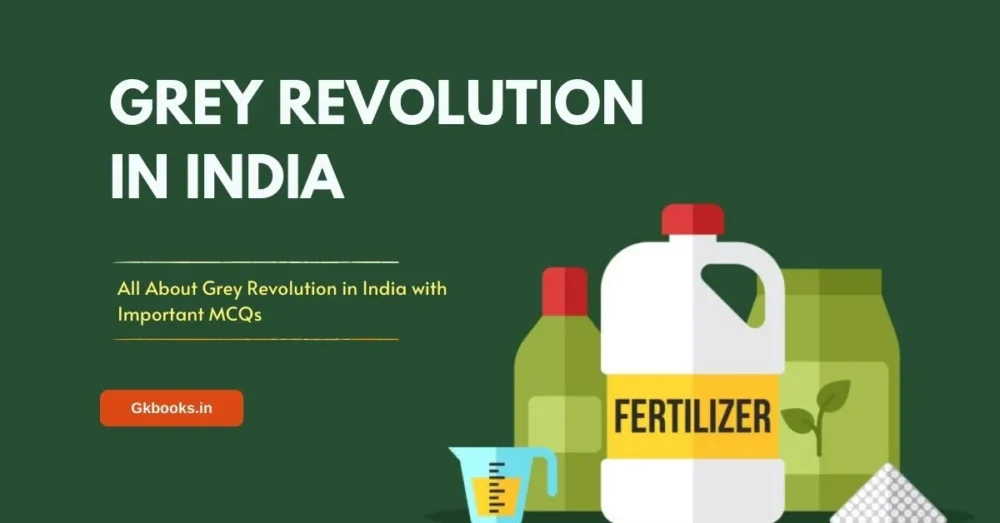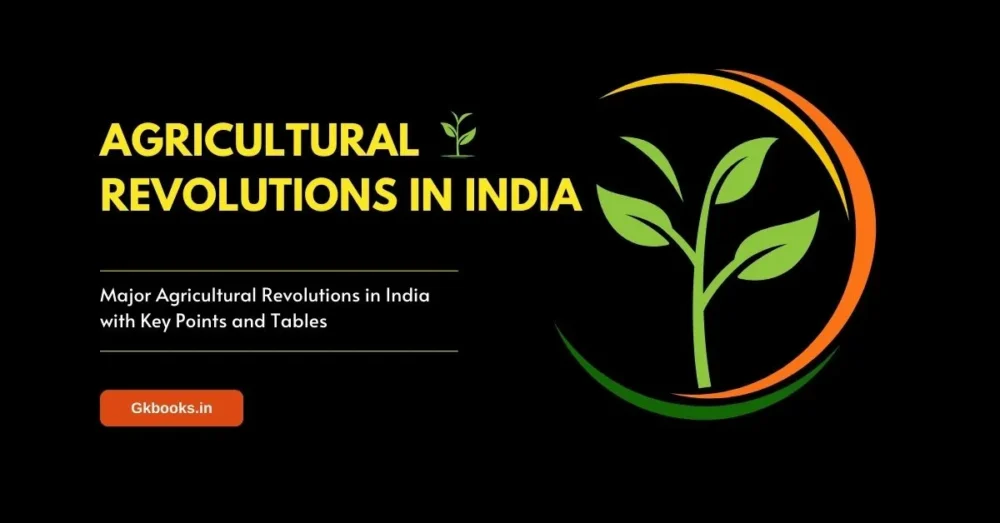This article sheds light on the Round Revolution in India, aiming to enhance the cultivation of potatoes for the nation’s benefit. The initiative was launched to ensure the widespread availability of potatoes, given their status as a staple food consumed by people across all socio-economic strata.
The Round Revolution, adopted by the government, focuses on elevating the growth and yield of potatoes throughout India. The primary motivation behind this endeavor is to make potatoes accessible to every individual in the country, considering their significance as a staple in most Indian households.
The consumption of potatoes is widespread, cutting across economic divides, with wealthy and economically deprived individuals relying on it. As a result of the increased potato production facilitated by the Round Revolution in India, the cost of potatoes has significantly reduced.
Can You Answer👇
✅ Question: Which crops were introduced to India by the Portuguese and have since become integral to Indian cuisine?
A. Rice, Wheat, and Potato
B. Banana and Mango
C. Potato, Tomato, Maize, and Papaya
D. Spinach, Cauliflower, Tomato and Potato
Challenge yourself! Engage in extra MCQ practice, which is accessible after the conclusion of this topic.
Also Read: Major Agricultural Revolutions in India from 1960-2024 with MCQs
The reason behind the Round Revolution in India
The reason behind the “Round Revolution” in India was to significantly increase the production of potatoes, a staple food consumed by a large portion of the population. Here’s a breakdown of the key motivations:
Importance of Potatoes
- Affordable and accessible: Potatoes are relatively inexpensive and easy to grow, making them accessible to the rich and the poor.
- Nutritional value: Potatoes offer a good source of carbohydrates, vitamins, and minerals, contributing to essential nutrients in many diets.
- Versatility: Potatoes can be prepared in various ways, making them a valuable ingredient in diverse culinary traditions.
Addressing growing demand
- Population growth: As India’s population continues to grow, the demand for food, including potatoes, also increases.
- Changing dietary habits: With rising incomes, dietary patterns are shifting towards more processed food, and potato-based products like french fries and potato Chips are seeing increased demand.
Goals of the Round Revolution
- Increase production: The aim was to double or triple the annual potato production rate within a short period.
- Improve infrastructure: Investments were made in storage facilities, cold chains, and processing units to reduce wastage and improve market access.
- Develop better varieties: Researchers focused on developing high-yielding potato varieties resistant to diseases and suitable for different climatic conditions.
Overall, the Round Revolution aimed to ensure food security and address the growing need for potatoes in India. It contributed to increasing potato production, making it more affordable and accessible to the population.
Things you should know about potatoes
- In 1935, the Government initiated research to improve potato varieties under the direction of the Imperial Agriculture Institute, Pusa, Bihar.
- Uttar Pradesh is the primary contributor to potato production, followed closely by West Bengal and Bihar in terms of geographical distribution.
- The Round Revolution aimed to enhance potato cultivation in specific regions and all suitable areas across India.
- Potatoes, known for their richness in starch and Vitamin B1, are considered a cash crop due to their high marketable value per unit area.
- Portugal introduced potatoes to India in the 16th century, and their variety was initially cultivated as a summer crop.
Top Potato Producing States in India
- The top producer of potatoes in India is Uttar Pradesh.
- As of 2023, Uttar Pradesh contributes around 29.65% to the total potato production in the country.
- West Bengal is the second largest potato producer in India.
- Other major potato-producing states are West Bengal, Bihar, Gujarat, Madhya Pradesh, Punjab, Haryana, Assam, Jharkhand, and Chhattisgarh.
- Uttar Pradesh’s production Meets both national and international potato demands.
Round Revolution in India: Key Factors for Successful Potato Production Increase
Research Initiative
- Comprehensive research was undertaken to develop suitable potato varieties.
- Seeds from the research demonstrated significantly higher yields than conventional seeds.
Irrigation Facilities
- The provision of proper irrigation facilities played a crucial role.
- Targeted efforts to enhance potato cultivation through efficient water management.
Central Research Institute in Shimla
- Pioneered the Round Revolution.
- Extensive research led to the development of disease-resistant potato varieties.
Disease-Resistant Variety
- The results of the research showcase increased yields under optimal conditions.
- Played a pivotal role in the overall success of the revolution.
Production Increase
- Post-implementation, India witnessed a remarkable 14-fold increase in potato production.
These measures collectively contributed to the triumph of the Round Revolution in India, specifically in the domain of potato cultivation.
Strategies to Increase Potato Yield
Here are some key strategies taken to increase potato yield:
Tuber Quantity and Size
- Develop seeds that promote increased tuber formation.
- Focus on managing tuber size for optimal yield.
Disease Resistance
- Select varieties resistant to common potato diseases in your area.
- This minimizes the need for fungicides and ensures a healthier crop.
Yield Potential
- Consider the desired yield.
- High-yielding varieties produce more tubers per plant but may require more intensive care.
Planting Depth
- Plant seed potatoes 3-4 inches deep, with the “eyes” facing upwards.
- Maintain proper spacing according to the chosen variety’s requirements.
Climate Compatibility
- Opt for varieties suited to your region’s growing season and temperature range.
- Early-maturing varieties are ideal for shorter seasons while late-maturing ones excel in longer seasons.
Green Canopy Maintenance
- Ensure the health and vitality of the potato plant’s green canopy.
- Considered essential for overall plant vigor and productivity.
Nutrient Management
- Understand the micro and macronutrient requirements of potatoes.
- Utilize fertilizers containing necessary nutrients in a balanced manner.
Balanced Fertilization
- Employ fertilizers throughout the growth cycle.
- Focusing on potassium and phosphorus during tuber development.
- Use a judicious approach to prevent adverse effects on potato plants.
- Follow soil test recommendations for specific nutrient needs.
Affordable Pricing
- Implement a comprehensive strategy to increase production efficiency.
- Resulting in affordable potato prices for the general populace.
Soil pH
- Aim for a slightly acidic pH level between 6.0 and 6.5.
- Test your soil and adjust pH with lime or sulfur as needed.
Nutrient Richness
- Incorporate compost, aged manure, or organic fertilizer to provide essential nutrients for healthy growth and tuber development.
Round Revolution Approach
- Embrace a holistic approach in addressing multiple facets of potato cultivation.
- The balance between increasing yield and maintaining sustainability.
Research and Development
- Invest in research initiatives to develop improved potato varieties.
- Continuously adapt cultivation practices based on scientific advancements.
Adaptation to Local Conditions
- Tailor cultivation practices to suit local environmental conditions.
- Optimize planting and harvesting times for maximum yield.
Loose and Well-Drained
- Potatoes thrive in loose, well-draining soil with plenty of organic matter.
- Amend clay soil with sand or compost, and add drainage channels if necessary.
By implementing these strategies, the Round Revolution in India successfully increased potato yield by focusing on key factors such as tuber quantity, size, green canopy maintenance, nutrient management, and affordability for the wider population.
Central Potato Research Institute
- The ICAR-Central Potato Research Institute is commonly known as ICAR-CPRI Shimla.
- It is a prominent non-profit potato research institute in Shimla, Himachal Pradesh, India.
- Operating under the umbrella of the Indian Council of Agricultural Research, the institute falls under the Ministry of Agriculture and Farmers’ Welfare, Government of India.
- Dr. Brajesh Singh currently serves as the director of ICAR-CPRI Shimla, overseeing its research and developmental activities.
- Established in August 1949 in Patna, Bihar, the institute originated based on recommendations from Sir Herbert Steward, the Agricultural Advisor to the Government of India.
- The primary objectives were to develop potato varieties, expand cultivation, and introduce suitable techniques tailored to local conditions.
- In 1956, the institute underwent a strategic shift to Shimla, Himachal Pradesh, aiming to enhance hybridization work in potato breeding and maintain the health of seed potatoes.
Conclusion
The emphasis of the Round Revolution in India was on enhancing and expanding the production of potatoes throughout the country. Spearheaded by the research institute in Shimla, there isn’t a singular individual designated as the father of the Round Revolution. Potatoes, a staple food in India, are widely consumed nationwide.
While Uttar Pradesh takes the lead in primary potato production, the escalating demand necessitated strategic measures. The objective was to ensure the availability of potatoes to all individuals at a reasonable price, prompting the need for a revolutionary approach to meet the growing demand for this essential food item.
Sample MCQ on Round Revolution
Q1. What is the primary motivation behind the Round Revolution in India?
A. Increase rice production
B. Boost wheat cultivation
C. Significantly increase potato production
D. Enhance sugarcane yields
Answer – C. Significantly increase potato production
Explanation-
Q2. Why are potatoes considered a crucial food source in India?
A. They are expensive and exclusive.
B. They are a rich source of protein.
C. They are affordable, easy to grow, and nutritionally valuable.
D. They have a short shelf life.
Answer –C. They are affordable, easy to grow, and nutritionally valuable.
Explanation-
Q3. What is one of the factors contributing to the growing demand for potatoes in India?
A. Decreasing population
B. Declining incomes
C. Changing dietary habits
D. Reduced interest in processed foods
Answer –C. Changing dietary habits (consumption of more ready-to-eat potato products such as potato chips, French fries, etc.)
Explanation-
Q4. What were the goals of the Round Revolution in addition to increasing potato production?
A. Decrease infrastructure development
B. Reduce the variety of potato cultivars
C. Improve storage facilities and processing units
D. Discourage the consumption of potatoes
Answer –C. Improve storage facilities and processing units
Explanation-
Q5. What did researchers focus on during the Round Revolution to enhance potato cultivation?
A. Developing high-yielding and disease-resistant potato varieties
B. Promoting traditional farming methods
C. Ignoring climatic conditions in potato cultivation
D. Encouraging the use of outdated technologies
Answer –A. Developing high-yielding and disease-resistant potato varieties
Explanation-
Q6. What is one of the benefits of potatoes being versatile?
A. Limited culinary applications
B. Decreased consumer interest
C. Increased demand for diverse culinary traditions
D. Reduced nutritional value
Answer –C. Increased demand in diverse culinary traditions
Explanation-
Q7. When did the Government initiate research to improve potato varieties under the direction of the Imperial Agriculture Institute, Pusa, Bihar?
A. 1920
B. 1935
C. 1950
D. 1965
Answer –B. 1935
Explanation-
Q8. Which state is the primary contributor to potato production in India?
A. Bihar
B. Uttar Pradesh
C. West Bengal
D. Maharashtra
Answer –B. Uttar Pradesh
Explanation-
Q9. Why are potatoes considered a cash crop?
A. Low marketable value
B. Limited geographical distribution
C. High marketable value per unit area
D. Short shelf life
Answer –C. High marketable value per unit area
Explanation-
Q10. Which country introduced potatoes to India in the 16th century?
A. Spain
B. England
C. Portugal
D. France
Answer –C. Portugal
Explanation-
Q11. Which state is the top producer of potatoes in India?
A. Bihar
B. Uttar Pradesh
C. West Bengal
D. Gujarat
Answer –B. Uttar Pradesh
Explanation-
Q12. What percentage does Uttar Pradesh contribute to the total potato production in India as of 2023?
A. 15.42%
B. 22.75%
C. 29.65%
D. 35.90%
Answer –C. 29.65%
Explanation-
Q13. Which state is the second-largest producer of potatoes in India?
A. Bihar
B. Uttar Pradesh
C. West Bengal
D. Madhya Pradesh
Answer –C. West Bengal
Explanation-
Q14. Where is the ICAR-Central Potato Research Institute (ICAR-CPRI) located?
A. Patna, Bihar
B. Shimla, Himachal Pradesh
C. New Delhi, Delhi
D. Kolkata, West Bengal
Answer –B.Shimla, Himachal Pradesh
Explanation-
"Please comment if you spot any errors in this post. I'll promptly correct and update the content. Additionally, feel free to provide feedback or suggest improvements to enhance the overall quality. Your input is valuable! 📝🤝 #FeedbackWelcome"
Sources:
Discover More: Recommended Reads




